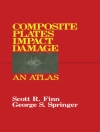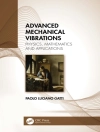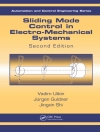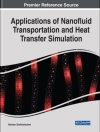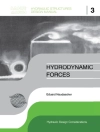This book presents various practical breakthroughs of 3D printing (3DP) technologies in developing different types of tool and gadgets to be used against COVID-19 pandemic. It presents multidisciplinary aspects of 3DP technology in social, medical, administration, and scientific areas. This book presents state-of-the-art applications of 3DP technology in the development of PPE, ventilators, respiratory equipments, and customized drugs. It provides a comprehensive collection of the technical notes, research designs, literature prospective, and clinical applications of 3DP technologies to effectively deal with the COVID-19 pandemic. This book will be beneficial for the medical professionals, pharmacists, manufacturing enterprises, and young scholars in understanding the real potential of 3DP technologies in aiding humans-based activities against the COVID-19 crisis. Having interdisciplinary applications in applied science, this book will also be useful for wide range of academicians, research scholars and industry stakeholders.
Inhaltsverzeichnis
Practical Frontline 3D Printing of Biomedical Equipment: From Design to Distribution – a North American Experience.- The Role of Distributed Manufacturing and 3D Printing in Development of Personal Protective Equipment against COVID-19.- Effectiveness of 3D Printing Technologies for Developing Ventilators.- Effectiveness of 3D Printing and Open Source Technologies for Development of Ventilators, and other Critical Care Technology in the Context of the COVID-19 Pandemic.- Three-dimensional Printing against COVID-19: Addressing Supply Shortages.- Artificial Intelligence in 3D-printing: A Revolution in Healthcare.- 3D printing Technology for Fighting COVID-19 Pandemic.- Fostering Novel Materials and Subsisting Technologies for 3D Printing.- COVID-19 Safe Clinical Dentistry: Applications of 3-D Printing Technologies.- Developing Personal Protective Equipment against COVID-19.
Über den Autor
Kamalpreet Sandhu is an Assistant Professor in the Product and Industrial Design department at Lovely Professional University, Phagwara, Punjab, INDIA. His primary focus is on the design and development of footwear products and injuries prevention. He was done different projects in Podiatric Medicine at the Defence Institute of Physiology and Allied Sciences, DRDO, Delhi, i.e., Design and developed a new kind of orthosis for social needs and work resulted in a publication “Effect of Shod Walking on Plantar Pressure with Varying Insole”. His area of research is Design Thinking, 3D printing and Ergonomics for Podiatric Medicine. He is also the editor of various books: Sustainability for 3D Printing, Revolutions in Product Design for Healthcare, Food Printing: 3D printing in Food Sector and 3D printing in Podiatric Medicine. He is also acting as an Editorial Review board member for the International Journal of Technology and Human Interaction (IJTHI), Advances in Science, Technology and Engineering Systems Journal (ASTESJ) and also a review editor for Frontiers in Manufacturing Technology section “Additive Processes”. He has established a research collaboration with Prof. Karupppasamy Subburaj at Singapore University of Technology and Design (SUTD), SINGAPORE on Medical Device Design and Biomechanics.
Sunpreet Singh is researcher in NUS Nanoscience & Nanotechnology Initiative (NUSNNI). He has received Ph.D in Mechanical Engineering from Guru Nanak Dev Engineering College, Ludhiana, India. His area of research is additive manufacturing and application of 3D printing for development of new biomaterials for clinical applications. He has contributed extensively in additive manufacturing literature with publications appearing in Journal of Manufacturing Processes, Composite Part: B, Rapid Prototyping Journal, Journal of Mechanical Science and Technology, Measurement, International Journal of Advance Manufacturing Technology, and Journal of Cleaner Production. He has authored more than 150+ research papers and book chapters. He is working in joint collaboration with Prof. Seeram Ramakrishna, NUS Nanoscience & Nanotechnology Initiative and Prof. Rupinder Singh, manufacturing research lab, GNDEC, Ludhiana. He is also editor of 3 books- ‚Current Trends in Bio-manufacturing‘, “3D Printing in Biomedical Engineering”, and ‚Biomaterials in Orthopaedics and Bone Regeneration – Design and Synthesis‘. He is also guest editor of several journals- special issue of “Functional Materials and Advanced Manufacturing”, Facta Universitatis, series: Mechanical Engineering (Scopus Indexed), Materials Science Forum (Scopus Indexed), and special issue on “Metrology in Materials and Advanced Manufacturing”, Measurement and Control (SCI indexed), Materials, Sustainibility (MDPI).
Chander Prakash is Associate Professor in the School of Mechanical Engineering, Lovely Professional University, Jalandhar, India. He has received Ph.D in mechanical engineering from Panjab University, Chandigarh, India. His areas of research are biomaterials, rapid prototyping & 3-D printing, advanced manufacturing, modeling, simulation, and optimization. He has more than 11 years of teaching experience and 6 years of research experience. He has contributed extensively to the world in the titanium and magnesium based implant literature with publications appearing in Surface and Coating Technology, Materials and Manufacturing Processes, Journal of Materials Engineering and Performance, Journal of Mechanical Science and Technology, Nanoscience and Nanotechnology Letters, Proceedings of the Institution of Mechanical Engineers, Part B: Journal of Engineering Manufacture. He has authored 60 research papers and 10 book chapters. He is also editor of 3 books: ‚Current Trends in Bio-manufacturing‘; “3D Printing in Biomedical Engineering”; and ‚Biomaterials in Orthopaedics and Bone Regeneration – Design and Synthesis‘. He is alsoguest editor of 3 journals: special issue of “Functional Materials and Advanced Manufacturing”, Facta Universitatis, Series: Mechanical Engineering (Scopus Indexed), Materials Science Forum (Scopus Indexed), and special issue on “Metrology in Materials and Advanced Manufacturing”, Measurement and Control (SCI indexed).
Neeta Raj Sharma in Biochemistry from Jiwaji University, Gwalior, is currently leading the School of Bioengineering and Biosciences as Additional Dean in Lovely Professional University, Phagwara, Punjab. She is a visiting Professor at Birmingham City University, UK and is actively working in association with several esteemed universities in Canada like University of British Columbia, Mc Gill University, Laval University and University of Victoria. With a vast multidisciplinary research experience of thirteen years in the field of Bioengineering and Biosciences, Prof. Sharma presently envisions extensive biochemistry and biotechnology based methodsto develop diagnostic tools and employ bioanalytical instrumentation pertaining to apt diagnosis in the domain of biomedical engineering and other allied research sectors. She has been conferred with prestigious research awards from LPU twice. She is a fellow member of Association of Biotechnology and Pharmacy, India and also bears to her credential membership of prestigious societies like Indian Science Congress, Association of Indian Science Congress, Association of Microbiologists of India, Indo-US Collaboration of Engineering Education 2013, Fellow Member International Science Congress Association, Life membership of association for promotion of DNA Finger Printing and other DNA Technologies. Till date, she has published more than 55 publications in peer-reviewed journals of high repute, 20 patents, 4 copyrights, 2 edited books and several articles in reputed magazines. She has been currently acting as reviewer for several Scopus-indexed journals of high standing and esteem and was appointed as guest editor for Scopus-indexed journal.
Karupppasamy Subburaj is an Assistant Professor in the Pillar of Engineering Product Development (EPD) at Singapore University of Technology and Design (SUTD). He leads an interdisciplinary research team to design and develop medical devices, assistive technologies, image-based quantitative biomarkers, and computing tools (machine learning, artificial intelligence) for diagnosing, monitoring, treating, and potentially preventing musculoskeletal disorders (osteoarthritis/osteoporosis) and disabilities by understanding bio-mechanical implications of those diseases and disabilities. He collaborates with physicians and clinical researchers from Tan Tock Seng Hospital (TTSH), Technical University of Munich (TUM), Singapore General Hospital (SGH), and Changi General Hospital (CGH) to combine research and technical expertise to address real-life clinical problems affecting Asia-Pacific and the World. Before joining SUTD, he did his postdoctoral work in the Musculoskeletal Quantitative Imaging Research (MQIR) laboratory at the University of California San Francisco (UCSF). At UCSF, he worked with a spectrum of clinicians (from radiology, orthopaedic surgeons, sports medicine, and physiotherapy/rehabilitation science) on characterizing magnetic resonance image (MRI) based bio-markers to understand the physiological and biochemical response of knee joint cartilage to physical exercise and acute loading. He has also developed and validated 3D modelling and quantification methods to study joint (hip/knee) loading patterns and contact kinematics in young healthy adults and patients with osteoarthritis. He received his Ph D from the Indian Institute of Technology Bombay (IIT Bombay), India, in 2009. During his Ph D, he collaborated with Tata Memorial Hospital (TMH), Mumbai, on developing a Surgery Planning System for Tumour Knee Reconstruction. He also worked with orthodontists from local hospitals in Mumbai, India, on designing and developing prostheses and surgical instruments/guides for reconstructing maxillofacial defects. After his Ph D, he worked as a research specialist (surgery planning) in the Biomedical Engineering Technology incubation Centre (BETi C) at IIT Bombay, before moving to UCSF for his postdoctoral studies.


